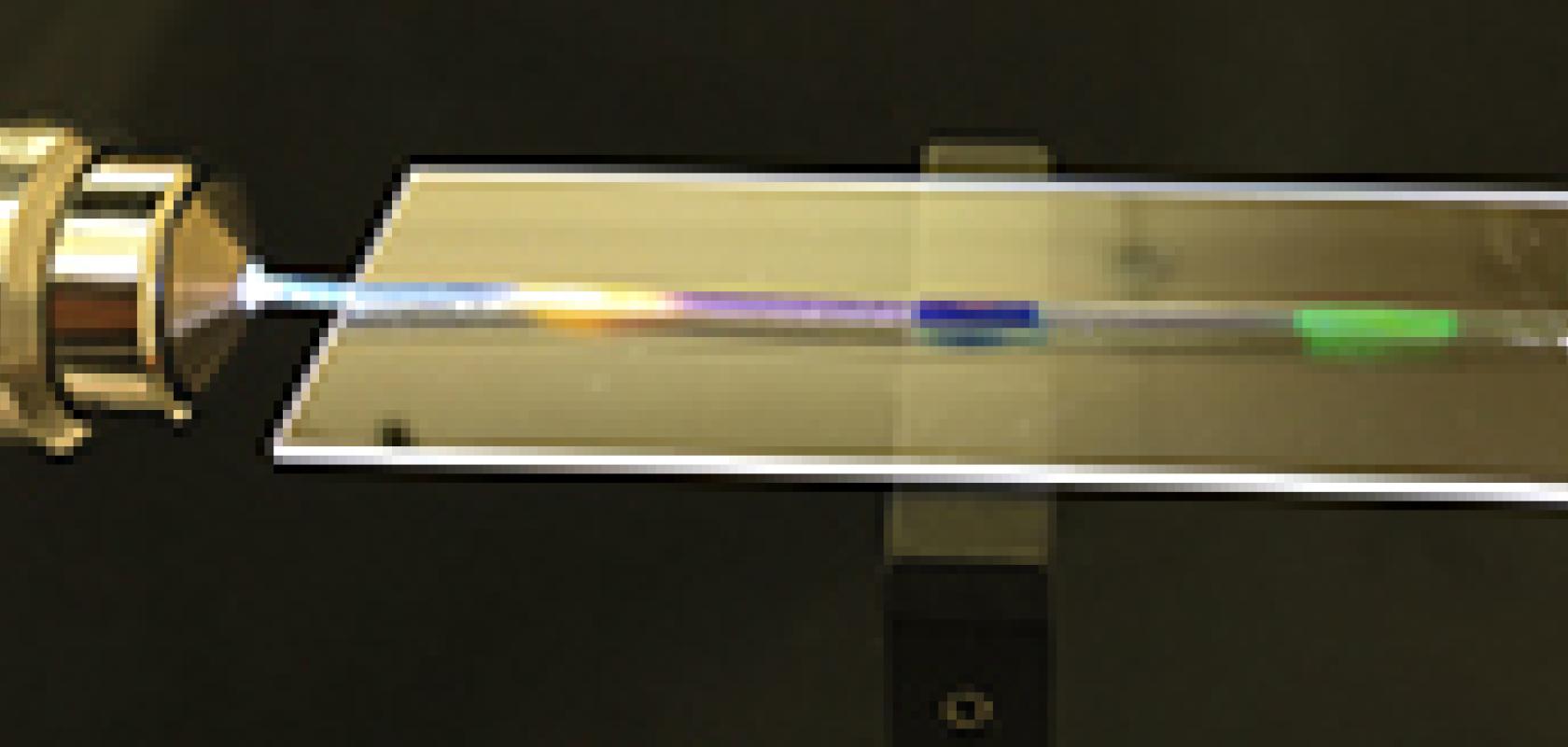Researchers from MIT and Harvard Medical School have developed a biocompatible and stretchable optical fibre made of hydrogel, which could help to advance the field of optogenetics.
The researchers say the fibre – which is as bendable as a rope of liquorice – could serve as a long-lasting implant that would bend and twist with the body without breaking down. The team has published its results online in the journal Advanced Materials.
Optogenetics is a field using light to activate cells, and particularly neurons in the brain. Here, researchers deliver short pulses of light to targeted tissues using needle-like fibres, through which they shine light from an LED source.
‘If these fibres could match the flexibility and softness of the brain, they could provide long-term more effective stimulation and therapy,’ said Xuanhe Zhao, associate professor in MIT’s Department of Mechanical Engineering.
Zhao’s group at MIT, including graduate students Xinyue Liu and Hyunwoo Yuk, specialises in tuning the mechanical properties of hydrogels an elastic, rubbery material composed mostly of water.
The researchers only thought to explore hydrogel’s use in optical fibres after conversations with the bio-optics group at Harvard Medical School, led by Associate Professor Seok-Hyun (Andy) Yun. Yun’s group had previously fabricated an optical fibre from hydrogel material that successfully transmitted light through the fibre. However, the material broke apart when bent or slightly stretched. Zhao’s hydrogels, in contrast, could stretch and bend like liquorice. The two groups joined efforts and looked for ways to incorporate Zhao’s hydrogel into Yun’s optical fibre design.
Yun’s design consists of a core material encased in an outer cladding. To transmit the maximum amount of light through the core of the fibre, the core and the cladding should be made of materials with very different refractive indices, or degrees to which they can bend light.
‘If these two things are too similar, whatever light source flows through the fibre will just fade away,’ Yuk explained. ‘In optical fibres, people want to have a much higher refractive index in the core, versus cladding, so that when light goes through the core, it bounces off the interface of the cladding and stays within the core.’
They found that Zhao’s hydrogel material was highly transparent and possessed a refractive index that was ideal as a core material. However, when they tried to coat the hydrogel with a cladding polymer solution, the two materials tended to peel apart when the fibre was stretched or bent.
To bond the two materials together, the researchers added conjugation chemicals to the cladding solution, which – when coated over the hydrogel core – generated chemical links between the outer surfaces of both materials.
‘It clicks together the carboxyl groups in the cladding, and the amine groups in the core material, like molecular-level glue,’ Yuk said.
The researchers tested the optical fibres’ ability to propagate light by shining a laser through fibres of various lengths. Each fibre transmitted light without significant attenuation, or fading. They also found that fibres could be stretched over seven times their original length without breaking.
Sensing strain
Now that they had developed a highly flexible and robust optical fibre, made from a hydrogel material that was also biocompatible, the researchers began to play with the fibre’s optical properties, to see if they could design a fibre that could sense when and where it was being stretched.
They first loaded a fibre with red, green, and blue organic dyes, placed at specific spots along the fibre’s length. Next, they shone a laser through the fibre and stretched, for instance, the red region. They measured the spectrum of light that made it all the way through the fibre, and noted the intensity of the red light. They reasoned that this intensity relates directly to the amount of light absorbed by the red dye, as a result of that region being stretched.
So, by measuring the amount of light at the far end of the fibre, the researchers can determine where and by how much a fibre was stretched.
‘When you stretch a certain portion of the fibre, the dimensions of that part of the fibre changes, along with the amount of light that region absorbs and scatters, so in this way, the fibre can serve as a sensor of strain,’ Liu explained.
The researchers imagine that such stretchable, strain-sensing optical fibres could be implanted or fitted along the length of a patient’s arm or leg, to monitor for signs of improving mobility.
Zhao envisions the fibres may also serve as sensors, lighting up in response to signs of disease.
‘We may be able to use optical fibres for long-term diagnostics, to optically monitor tumours or inflammation,’ Zhao noted.


